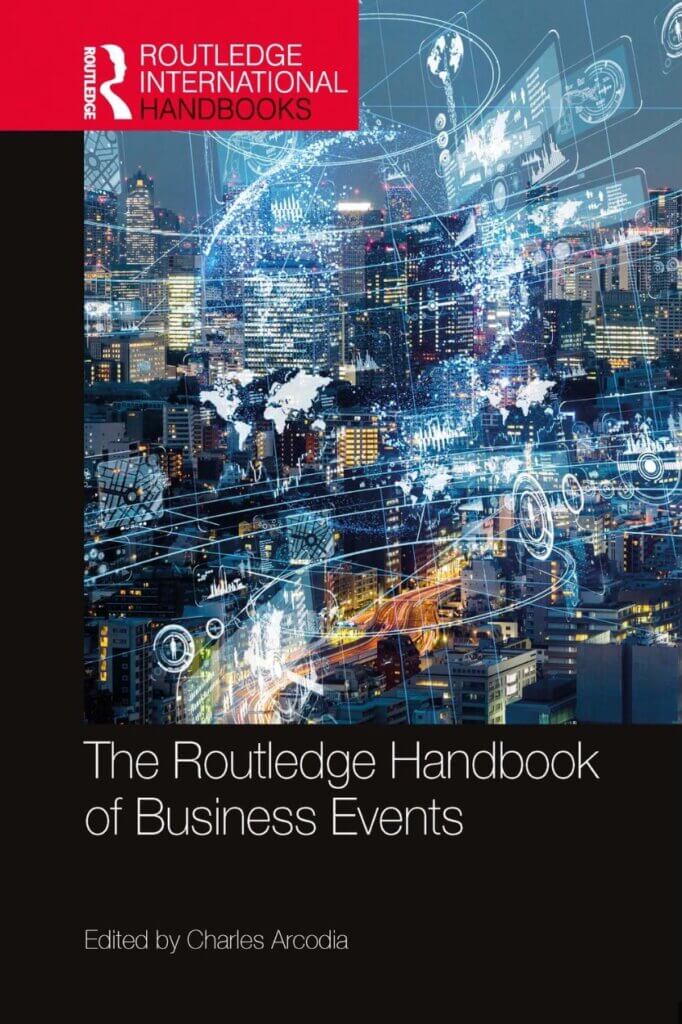Here’s an independent review of my conference design work, published as a case study in Chapter 25—Designing and Developing Content for Collaborative Business Events—of the book The Routledge Handbook of Business Events. (Tip: The hardback version is expensive, the ebook is a quarter of the hardback cost.) The chapter was written by Ruth Dowson, Chantal Dickson, and Simon Bell.
Case Study: Adrian Segar – “Conferences that work”
For over 35 years, Adrian Segar has facilitated, presented at, and experienced hundreds of conferences and other business events. Originally from a scientific academic background, as an independent consultant in the United States, Segar attended traditional academic conferences and meetings, becoming fascinated by the outcomes (and lack of outcomes) when people were assembled together with the intention of teaching, connecting with, and learning from each other. As he worked with and for his clients within their organisational environments, to identify and deliver specified outcomes, Segar realised that the structures and events created by these organisations were not only failing to fulfill their intended results, but that there were additional issues, arising from dysfunctional relationships within their organisations, that were not being addressed by formal business event structures. People problems were at the root of the matter. By learning from the dilemmas that organisations faced, since 1992 Segar has advanced an approach to developing and delivering conferences and meetings that would address these important concerns, and this approach has become his theme: ‘Conferences that work’. Segar advocates an approach to support conference designers in making the greatest improvements to the outcomes of their business events. Segar suggests that such improvements are not achieved by providing exciting, trendy or healthy food and refreshments, or incorporating the latest audio-visual and technology components, or designing costly décor that can enhance a creative environment. Instead, he challenges the time-honoured processes by which conferences and other business events have been designed for hundreds of years.
Rather than have business event attendees listening passively to lectures, Segar’s processes aim to transform them into active participants, in events structured with opportunities to enable them to make significant connections, to influence and decide their own agendas and content, to contribute their own expertise, and to learn from each other. As a result, participants value the time and effort they supply to these engaging occasions, whilst the outcomes for organisers and clients are met more effectively. Segar suggests that “Participant-led and participation-rich conferences disrupt the age-old conference-design model by fulfilling 21st century audiences’ need to take control of learning environments and by capitalizing on their collective wisdom and experience.”
Segar reasons that, in theory, a conference provides useful content, an opportunity to acquire relevant knowledge, to enable learning from others, getting answers and solving problems. In between structured sessions, there are scheduled breaks to enable informal information gathering. A key component of a conference is networking, whereby attendees make informal contacts during breaks or social time, outside of the formal structure of the event. But Segar asserts that this approach to designing conferences and other business events is too haphazard: what if the content isn’t quite what is needed, or attendees don’t learn what will help them to solve the problems they face, or if they don’t manage to connect with the people who might help them? Meetings that involve connecting with peers could recognise the innate wisdom of other participants in enabling each other to develop solutions to common issues, building community and longer-lasting productive relationships in the process. When a business event is built around attendee interaction, empowering participants to shape the content through active involvement and engagement, the outcomes are more likely to be successful, and at the same time, stronger and more meaningful relationships will result.
In order to share this learning more widely, Segar has written event design books that provide formats, tools, and techniques for event producers and planners to design their own participative events. ‘Conferences That Work: Creating Events That People Love’ (2009) sets out a step-by-step approach to designing participant-driven events, transforming conferences and professional meetings into what participants want and need them to be. ‘The Power of Participation: Creating Conferences That Deliver Learning, Connection, Engagement, and Action’ (2015) details how to design individual conference sessions. Segar’s processes improve meetings and conference sessions, “by turning passive attendees into active participants, to maximise the learning, connection, engagement, community building and consequential action that takes place at sessions and meetings”.
Segar recognises that books and websites can only initiate limited levels of understanding and change, so in addition to the complimentary resources provided on his website and blog, he offers an experiential approach to learning about the processes for developing participant-led events, providing activities that explore the techniques and theoretical aspects of his work. These ‘POPWORKS’ workshops are hosted across North America and Europe as well as online.)
Citation
Dowson, R., Dickson, C., & Bell, S. (2023) ‘Designing and developing content for collaborative business events.’ In: Arcodia, C. (Ed.) The Routledge Handbook of Business Events. Abingdon: Routledge. Many thanks for Ruth Dowson’s permission to reproduce this case study. Ruth was a Senior Lecturer in Events Management at Leeds Becket University for many years and is currently writing a book about cultural risk assessments for events and, intriguingly, completing a Ph.D. on the eventization of faith.

